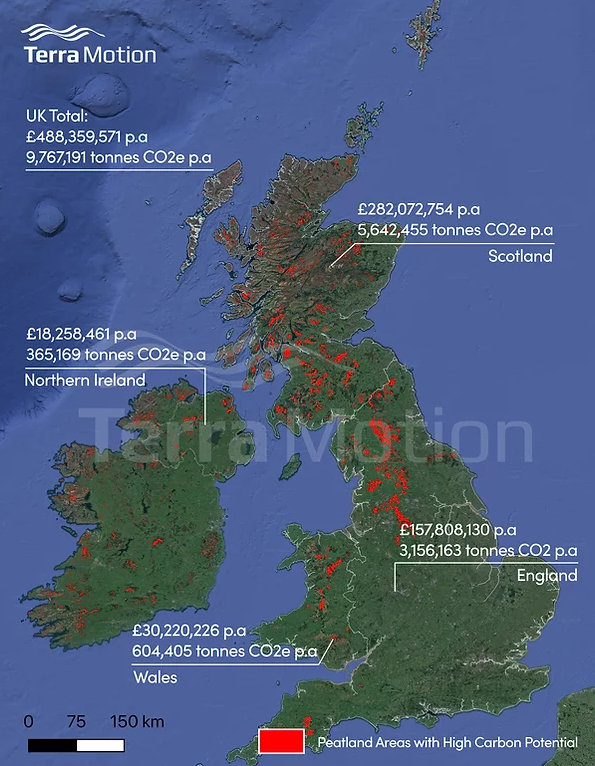Peatland restoration value hits £470m, outpacing grouse shooting as an income source for landowners
A new analysis has shown that trading carbon by restoring upland peatlands could be worth more than four times the economic value of grouse shooting.
Amidst reports that grouse moors may face another uncertain season, new market analysis released by Terra Motion estimates that restoration of high-carbon potential peatlands in Britain’s uplands has a value of over £470 million*. Overall, carbon prices, on which the economic value of peatland is formed, have grown 73% on this time in June 2021, with most alternative land management models outpacing their conventional counterparts.

Meanwhile, the grouse moor market has been rocked by sustained poor breeding seasons, parasite and disease outbreaks and regulatory restrictions on intensive management interventions, such as heather burning and predator control. Attempts to become less volatile, by supplementing low grouse stocks with farmed partridges, have been met with barriers importing chicks and eggs from major suppliers in France, due to unprecedented bird flu outbreaks.
In the past few years, many estates have run reduced programmes of shooting or cancelled them altogether, despite investing heavily in shoot management, indicating that a significant number of grouse moor owners are losing money. By contrast, Terra Motion’s market analysis concludes that, with an appropriate carbon offsetting scheme, any actual costs of a peatland restoration project could be recovered in the first year of operation, making investing in peatland a highly lucrative proposition.
Commenting on the Terra Motion market analysis Luke Steele, Executive Director of Wild Moors, said: “The sustained rise in value of restoring peatland for carbon potential is remarkable, and it makes it clear that this shift is here to stay. More and more landowners are beginning to see the huge potential of alternative land management models to tackle climate change and transform the uplands, as well as the strong potential to meet their target returns.
It’s clear that a crossover point has now been reached with the environmental, economic and social value of ecosystem restoration increasing and the viability of grouse moors decreasing.”
While investor confidence in peatland restoration is driven by multiple market factors, the climate and biodiversity crises that have gripped the world have illuminated the risks associated with business-as-usual portfolios and practices. Against this backdrop, the prospect of alternative land management, which is more efficient and with dramatically less emissions than conventional models such as grouse moors, has greater relevance.
Under a business as usual scenario a company would expect to emit a certain amount of carbon. In the long-term, the goal is for the company to find new ways of trading without emitting as much carbon: to meet its regulatory burden in the short-term, it will need to buy carbon offsets to progressively bring its emissions down to net-zero.
At the same time a landowner owns an area this is currently or has the potential to be monetised through unsustainable practices. If the landowner agrees to forgo aggressive management practices on a certain tract of land in perpetuity, it can receive an offset credit that it can sell to businesses. The landowner can generate cold, hard cash; the business can meet its regulatory mandate.
Luke Steele adds: “Considering the scale of emissions reductions that would occur with a shift to restoring degraded peatlands in the uplands, this is a critical moment to invest in innovations that can move Britain to net-zero, and fast. There is also added carbon and biodiversity value in extending these initiatives to natural regeneration or replanting of broadleaf woodlands in appropriate places on moorland slopes.”
Ends
[registration_form]
I think the big caveat is that release of an alternative ‘game bird’ partridge or pheasant is well known to be damaging and would probably leave a lot of keepers still controlling ‘vermin’.
If it goes ahead the money involved should be strictly based on no shooting of game birds – full stop. The term aggressive management would need to be very clearly defined.